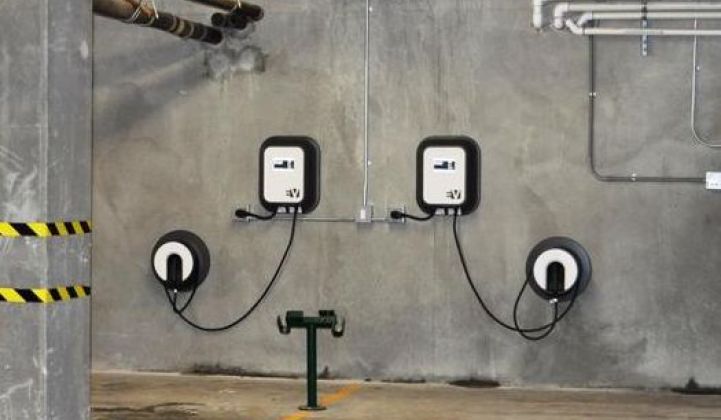For stakeholders in the electric vehicle industry, the back-to-back bankruptcies of Better Place and ECOtality have been sobering, but not surprising. Though both were early pioneers in the EV charging space, many now believe their major flaw was the proprietary network model adopted by both.
Rather than making all chargers easily accessible to all drivers and providing site hosts the flexibility to mix and match different types for specific needs, ECOtality and Better Place ended up frustrating drivers by making it difficult for non-members to access chargers. They've now left site hosts with more than 4,000 stranded chargers to deal with.
So, we now find ourselves at a crossroads, with the industry doing its best to correct course. ECOtality’s Blink network is still up and running, purchased in a recent auction by Car Charging Group. Better Place’s network of chargers is now in the hands of companies struggling to find a fix for the hundreds of chargers that have been left virtually nonfunctional. Both are cautionary tales highlighting the risks of proprietary networks.
To date, the initial rollout of publicly funded networked charge stations for plug-in electric vehicles (PEVs) in California has been administered by proprietary network management systems and vendors like ECOtality, ChargePoint and Better Place. This has created an issue of “vendor lock-in” for site hosts who are unable to switch the backend software management platform to another network provider. In order to change network management systems, the site host would have to discard the existing hardware and purchase new charge stations on their own dime, a deterrent that moves the industry backward.
There is a better way forward.
While proprietary networks emerged in the U.S., Europe experienced its own network challenges. Faced with vendor lock-in and proprietary network interoperability issues, utilities within Ireland and the Netherlands issued mandates enforcing a new model based on open standards to provide site hosts flexibility and to encourage electric-vehicle adoption by drivers. Now active in more than 50 countries, this open-standards-based approach, made possible by a communications platform called Open Charge Point Protocol (OCPP), has become the industry standard between charge station and the back-end software network.
Charging networks based on open communications standards are an excellent alternative to proprietary networks and have been future-proofing Europe’s EV networks for close to four years now. The open model provides site hosts the freedom to switch network management providers without having to purchase new charging stations. It also stimulates technical innovation by allowing free market competition to push down the costs of both charging station hardware and back-end software, while dramatically derisking the hardware purchase for site hosts.
Unlike the U.S., Canada has started to embrace open standards much earlier in its EV infrastructure rollout, with utilities like BC Hydro choosing open standard-based networks to ensure flexibility for future growth. Here in the U.S., the issue is emerging as a critical decision at the city and state levels. As I write this, at least four cities and states -- including Connecticut, Vermont, Los Angeles County and Sacramento -- have RFPs for open-standards-based EV networks. In California, the California Energy Commission and the California Public Utilities Commission are both in frequent and deep discussion with industry organizations and companies about the best path forward.
The biggest challenge facing the adoption of EVs today is no longer related to “range anxiety” -- rather, it stems from limitations facing drivers and site hosts. By enabling open, flexible EV charging networks, we can usher in the next wave of EV adoption worldwide.
***
Brett Hauser is a founding member of the Open Charge Alliance (OCA), a global consortium of public and private electric vehicle infrastructure leaders, and president of Greenlots, a global open-standards-based technology solutions provider for electric vehicle networks.



